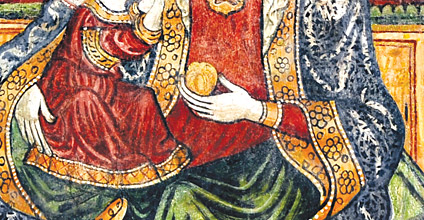
- Gradišće – Koper
- Podpeč – Zanigrad – Hrastovlje
- Slum – Roč – Hum
- Draguć – Paz – Gradinje – Gologorica
- Pićan – Gračišće – Lindar
- Pazin – Beram
- Oprtalj – Čirkoti – Rakotule
- Vižinada – Božje polje – Labinci
- Višnjan – Bačva – Poreč
- Sv. Lovreč – Kloštar
- Šorići – Dvigrad – Kanfanar
- Žminj – Svetvinčenat
- Bale – Batvači – Fažana – Pomer
- Bičići – Barban – Prodol
- Jasenovik – Nova Vas – Vranja
- Plomin – Brseč – Lovran
Plomin – Brseč – Lovran
Plomin
St. Mary
Plomin is the town where the region of Istria ends and Kvarner and Liburnia begin. In the past the Raša River marked the border of ancient Liburnia, including the Labin area. Symbolically, it belonged to this area in the Middle Ages as well - the parish church is named after St. George, just like in other Liburnian towns: Brseč, Lovran, Trsat. In Plomin there are two St. George churches.
More

St. George the Elder
St. George the Elder is an older and more complex structure than the parish church. There is a lot to be said about it, and thanks to its importance it deserves an entire monograph. The exact year of construction is unknown; however it is supposed to have been built partly in the Romanesque period.
More

Brseč
St. George
Another Parish Church of St. George awaits us while traveling by road from Plomin along the ridge of the slopes of Učka. We can almost sense all these slopes in each and every bend of this winding road. Brseč is an acropolis-type of settlement, standing on a steep cliff above the sea. The best way to experience its location is to continue from the Church of the Holy Cross by dirt road towards St. Magdalene's Church.
More

Lovran
St. George
In Lovran there are as many as three churches with remains of medieval frescoes. The old Lovran cemetery once stood by the tiny port, with its three churches of which only the Holy Trinity Church stands today. Inside the church are remains of frescoes, the work of Albert from Constance. The other two decorated churches are situated in the historic core of Lovran, whose tightly-knit appearance was dictated by the medieval...
More

St. John
The mural paintings in St. John's Church were discovered during electrical wiring work, which was then followed by the restoration work. The paintings are the work of two masters. The more talented of the two painted the scene of the Baptism of Christ on a dark blue background on the northern wall. The landscape is suggested by schematized waves of the Jordan River in which Christ is standing.
More















